You’ve had some time to rejuvenate, you’re ready to start thinking about the possibilities for the Fall. New classroom, new students, or maybe just wanting a new look to your space! The possibilities are endless when you start planning to set up your classroom. This blog post will help you discover 7 of the best, practical ideas for your classroom setup.
If you’re wondering what other topics to focus on at the beginning of the school year (or even throughout), click here to download The Ultimate Guide to a Successful School Year!
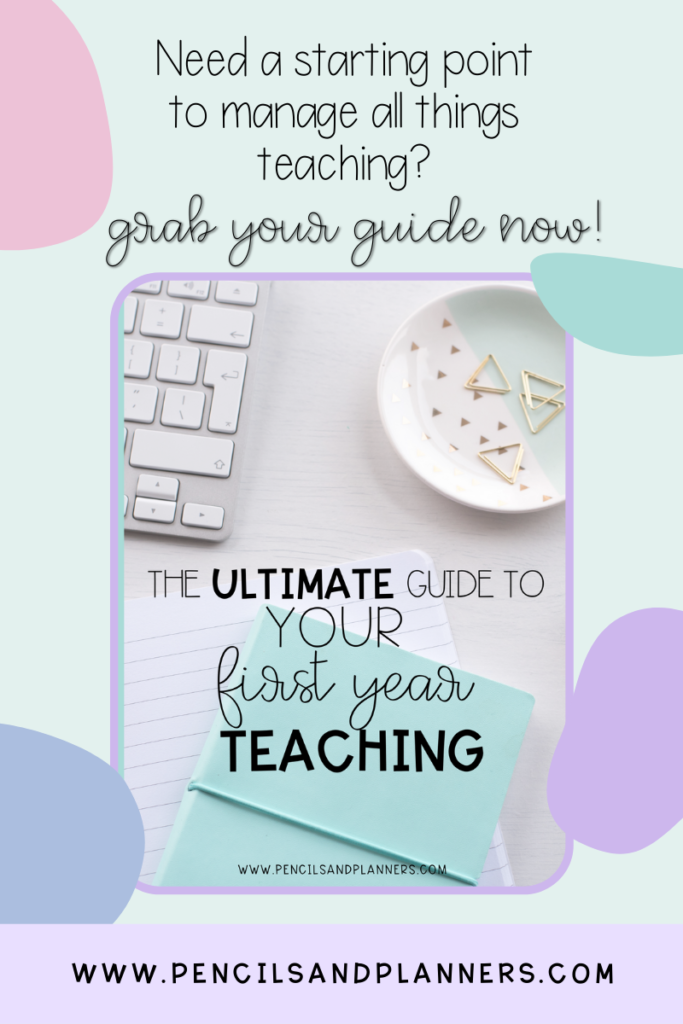
The moment had finally arrived. The secretary invited me to check out my classroom. All mine! I walked into Room 201, flooded with questions and ideas. 9 Bulletin Boards, 4 bookshelves, new SmartBoard… ooh, the possibilities. But oh, the questions! The room was rectangular and very narrow, not a traditional square classroom. How would I make sure my students could see the board? Where should I put my desk? Would I use a desk? There was so much to do and on top of all my questions was the reality that this was no blank canvas. I looked around at a messy classroom – old snacks, crumbled papers, tattered workbooks. That didn’t dampen my excitement though. I was going to figure out how to transform this room into a “home” for me and my students. But where to start? One thing was for sure… Room 201 needed a major cleaning first!
Now… it’s your moment! When you walk into your classroom, there is a feeling of excitement and jitters. But there’s also a tremendously long to-do list… items to organize, furniture to move, supplies to label, books to categorize, bulletin boards to paper then border. If you’re looking for where to start or looking for some potentially new ideas, keep reading to discover 7 of the best, practical ideas for classroom setup.
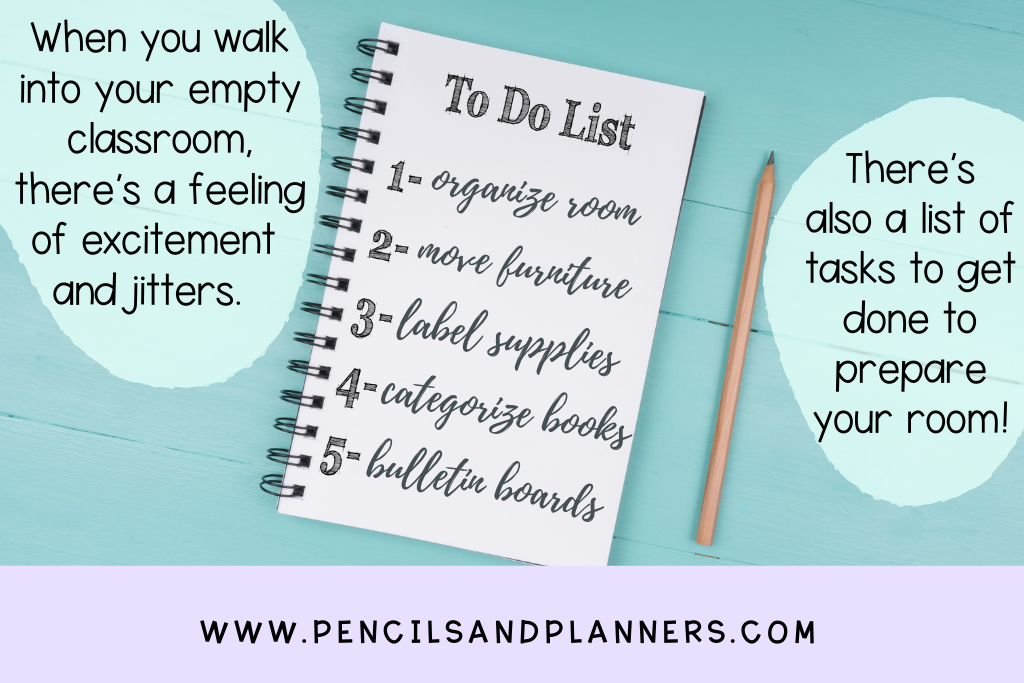
Arrangement of Classroom Furniture (Idea #1)
Meeting Area
The meeting area should be a special place in your classroom. Find an area near your interactive whiteboard or dry erase board where you’ll gather your class for lessons.
Library
Your library should be easily accessible and organized. We’ll talk more about that later in this blog post.
Bookcases
Bookcases are versatile in the classroom. I always felt like I could use just one more. Bookcases are great for storing math manipulatives, student supplies, writing materials, displaying student projects or featuring read alouds. They can serve as partitions in the room, creating smaller areas within the classroom, and can hold much more than just books. Bookcases can also be lined against the walls to create a more open, larger learning space. If you use bookcases as partitions in your classroom, make sure it’s easy to move around and still allows you to monitor all students. This might take some adjusting to find the right placement.
Desks and Tables
Whether you have individual or paired desks, or tables, you will want to consider movement around the room. Students should be able to get to different parts of the classroom with ease and have enough space to work. We’ll chat more about it in a little bit.
Teacher Space
Remember you will need to have a clear line of sight, a visual of all students. Think about your must-haves that need to be nearby at all times – grade book, plan book, favorite pens, stickers, coffee cup, water bottle. If you don’t plan to have a specific teacher area, then brainstorm options on having a portable teaching station (like this Lexington 3-Tier Rolling Cart) to easily access materials and supplies while you float and work around your classroom.
Learning Centers/Stations
Learning centers, or stations, are where your students will work independently or with a partner to learn a skill or to further practice a concept they’ve learned.
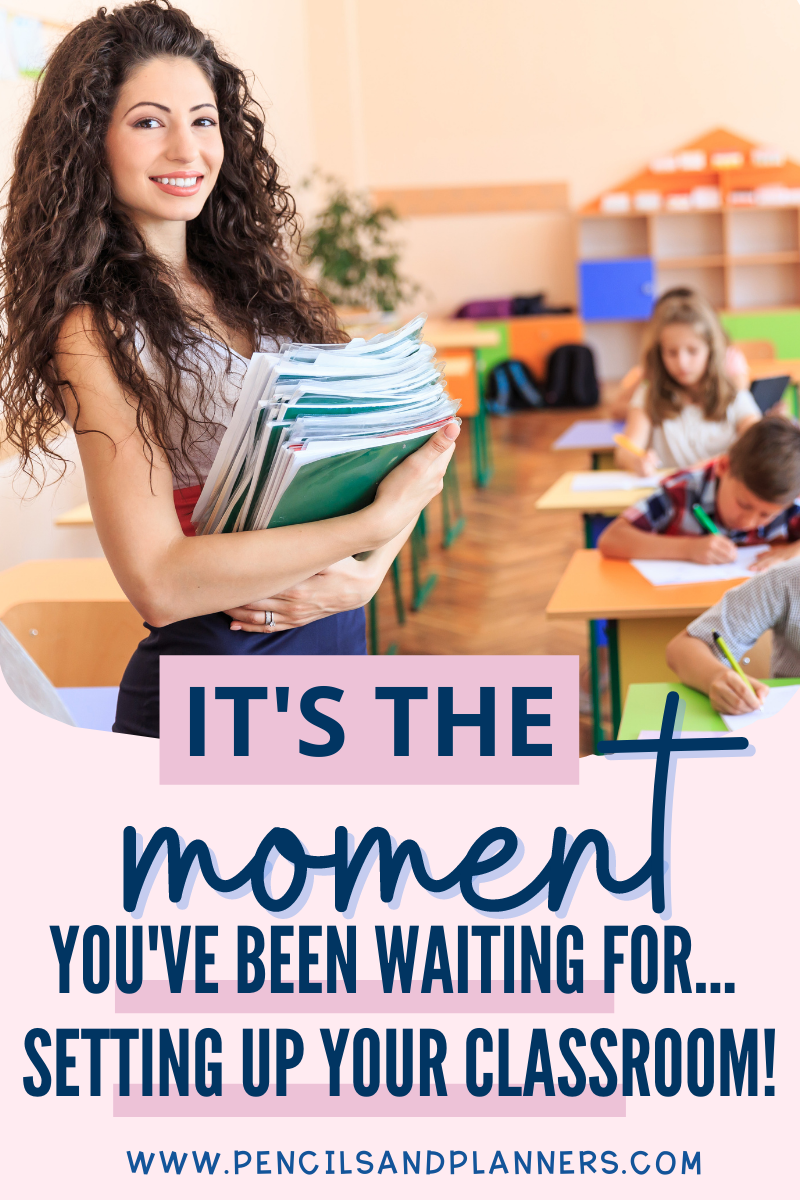
Ways to Set Up Desks in a Classroom (Idea #2)
There are tons of options when planning your desk arrangements for your classroom: rows, pairs, groups of 4 or 6. Seating arrangements can make or break classroom management in your classroom. Carefully thought-out seating arrangements can minimize behavior issues throughout the day and maximize learning for everyone!
While we’re talking about seating – think about seating around your classroom. Will they have different seating options in the library, such as bean bags, rocker chairs, or portable lap desks. Flexible seating gives students opportunities to move while they work (whether that is bouncing, rocking, or leaning). Movement increases oxygen flow and core strength while improving alertness and focus. There is no right or wrong answer. It’s about preference, the ability of the students, and the space you have to work within your classroom.
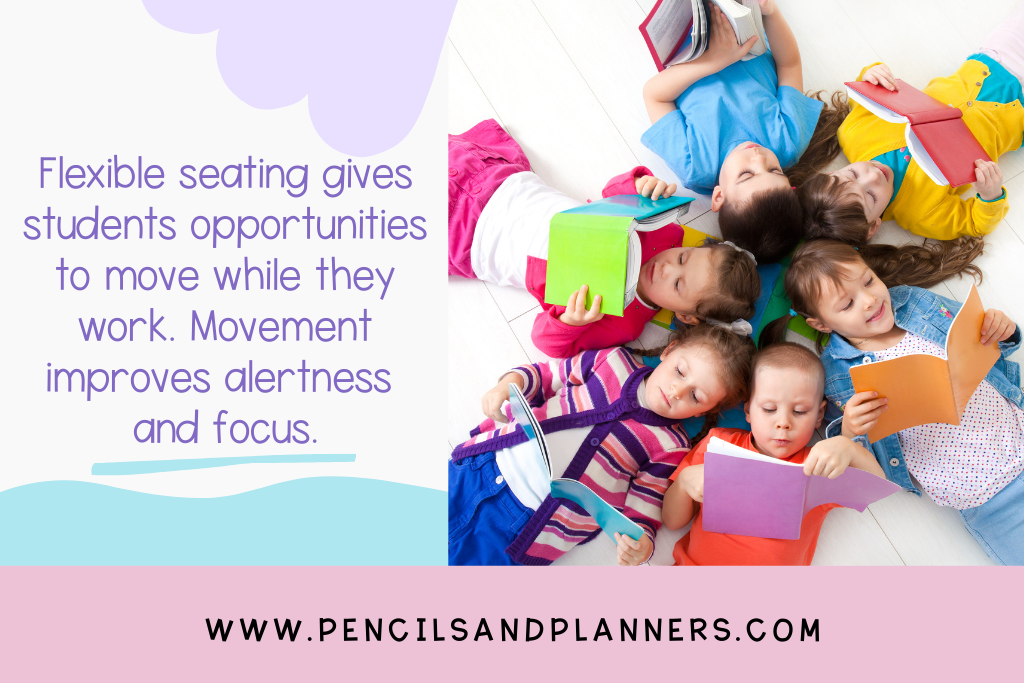
Identifying a Meeting Area (Idea #3)
Furniture should work around this area. Your meeting area doesn’t need a rug, SitSpots, or carpet samples; all you need is a structure, set expectations, clear instructions, and lots of opportunities to practice at first.
Organizing Your Classroom Library (Idea #4)
Spend part of your day (or for me – it was typically two half days) inventorying what you have and what you could use more of. Ask grade team members if they have a surplus of books or ask around to see if anyone in the school may be clearing out books from their library. (Check out Thrift Books for great prices on books!) Brainstorm how you’d like to categorize your library bins into topics or categories.

Student Materials (Idea #5)
Taking into consideration the amount of space you have for storage, brainstorm possible ways for students to access or keep materials. You may want students to have their pencil cases, pencil boxes, or chair pouches that hold their personal supplies. Or you may want to have a bin for storing these individual supplies in one place for the group or table. Whether you go with individual magazine file-like bins or individual mini crates, or group crates, be sure to think ahead on where they will be kept for easy access.
How to Set Up Learning Centers in the Classroom (Idea #6)
Learning centers are great opportunities for active learning, accommodating learning styles, differentiation, and can have self-directed activities to encourage independence. Centers can focus on phonics, reading, writing, math, word work, science, arts, or seasonal topics. Plan out where in the room you will have different centers. DON’T plan a spot for every center. Students can always work at their desks/tables and the larger areas (like the meeting area or library) can also serve as locations for a center or two.

Bulletin Boards Ideas for Student Work (Idea #7)
Over the years, I have seen so many great ideas for bulletin board covering. I’m a traditional (fadeless) paper bulletin board person BUT there are tons of other materials you can use: stretchy fabric (pull taut and secure to the board), Better Than Paper, or even removable peel-and-stick paint wallpaper. Borders will frame your bulletin boards nicely (I’m a fan of double borders). Don’t stress about the boards, have fun, and take your time with them (the larger bulletin boards can be challenging to set up on your own). They will be covered with anchor charts, student-focused information (e.g., birthdays), and student work.
More Ideas for Classroom Setup:
- Three Ideas for Setting Up Your Classroom
- An Easy Guide to Setting up Your K-5 Classroom
- Guide on Classroom Design and Layout
- The Importance of the Classroom Library (pdf)
Wait! Here are more great resources for you this year…
- Time to tackle your classroom library? April from Teach Travel Read has 4 Secrets to Successfully Organize a Classroom Library. You’ll want to check those out!
- Classroom setup done & looking for ways to customize how you organize & spruce up your room? Check this post from Maureen at Teacher Baker Maker on How to Make a Teacher Toolbox with Customized Labels Using a Cricut.
- Organization not really your thing? Years ago, I used to tell my husband – there’s a method to my madness. And there was, but check out this info. from Alexandra at Messy Buns & Markers on Why is Classroom Organization Important For This School Year? 5 Daily Habits that you’ll want to consider and implement for your own sanity & peace this year.
- Planning your first day, first week, or first month of school? If you’re thinking of using a digital planner this year but you aren’t quite sure, read Kimberly Morrison’s 5 Ways Digital Planning Will Save you time and Keep you Organized.
Are you still on summer break? You lucky educator, you!
- You have got to read this post all about Summer Rejuvenation from Kelli at Still Teaching Still Learning! With my last few weeks of summer break left, I’m printing out this post & checking off my last bit rejuvenation recommendations!
Looking for tips on how to blog?
Check out: 7 Helpful Tips on How to Blog Like a Boss
Now that you have a plan in place to setup your classroom, grab The Ultimate Guide to a Successful School Year for a checklist in setting up your classroom and to get a head start on what to focus on during Month 1 at school!
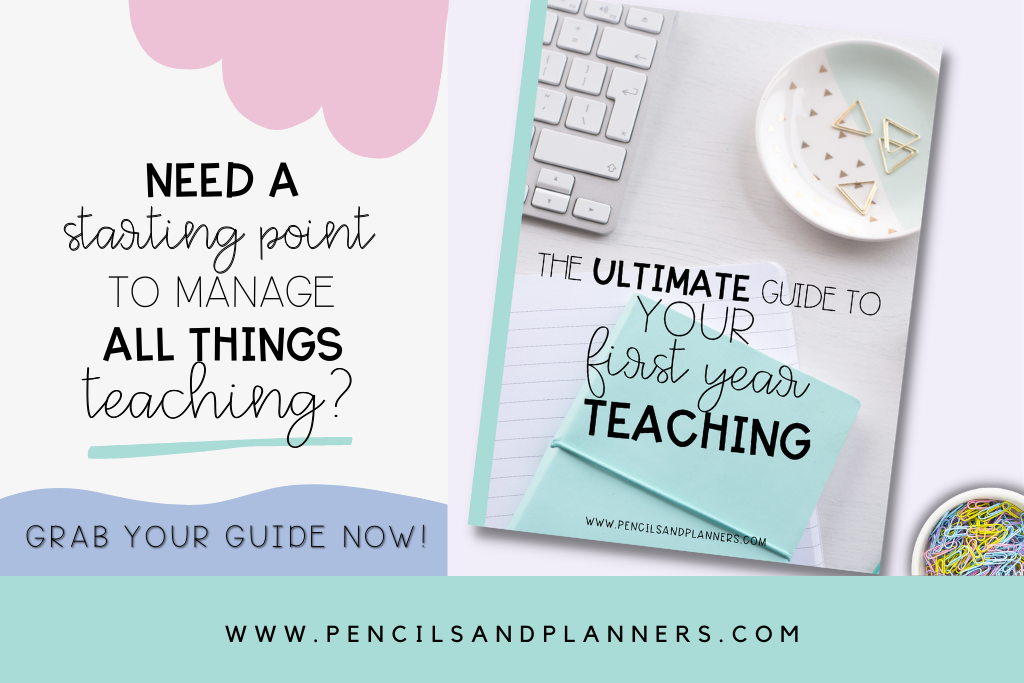
Teaching is an incredibly rewarding, but demanding career. We educate future responsible citizens. With such an honorable task, we have a lot to manage, maintain, prepare, and… TEACH! Whether you are student teaching, in your first year, or 10th year – there will be bumps in the road, challenges to face, successes to celebrate, and adjustments to be made. If something isn’t working, tweak it. Be honest with your students. Be clear. And be consistent.
Remember that you don’t have to do it alone. Find a buddy on your grade team or at your school. And if that’s not possible, read more about how I can serve you as your mentor and coach. I’m here for you, to help you feel successful and excited about your teaching years throughout the good, the bad, the ugly! Now, go ahead – start making some decisions on your classroom setup! Follow me on Instagram (@pencils_and_planners) for more tips and information for a successful year and if you have questions, DM me or drop them in a comment below! Before you go… I’m a sucker for classroom setup and preparation, let me know below in the comments what will be your theme, colors, or ideas for classroom setup this Fall! I can’t wait to see!

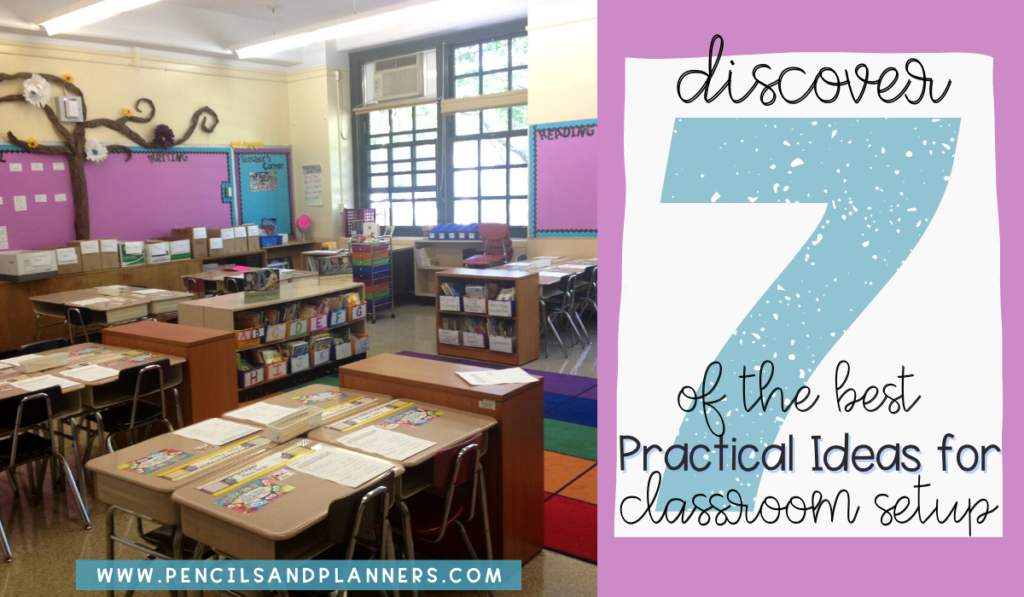
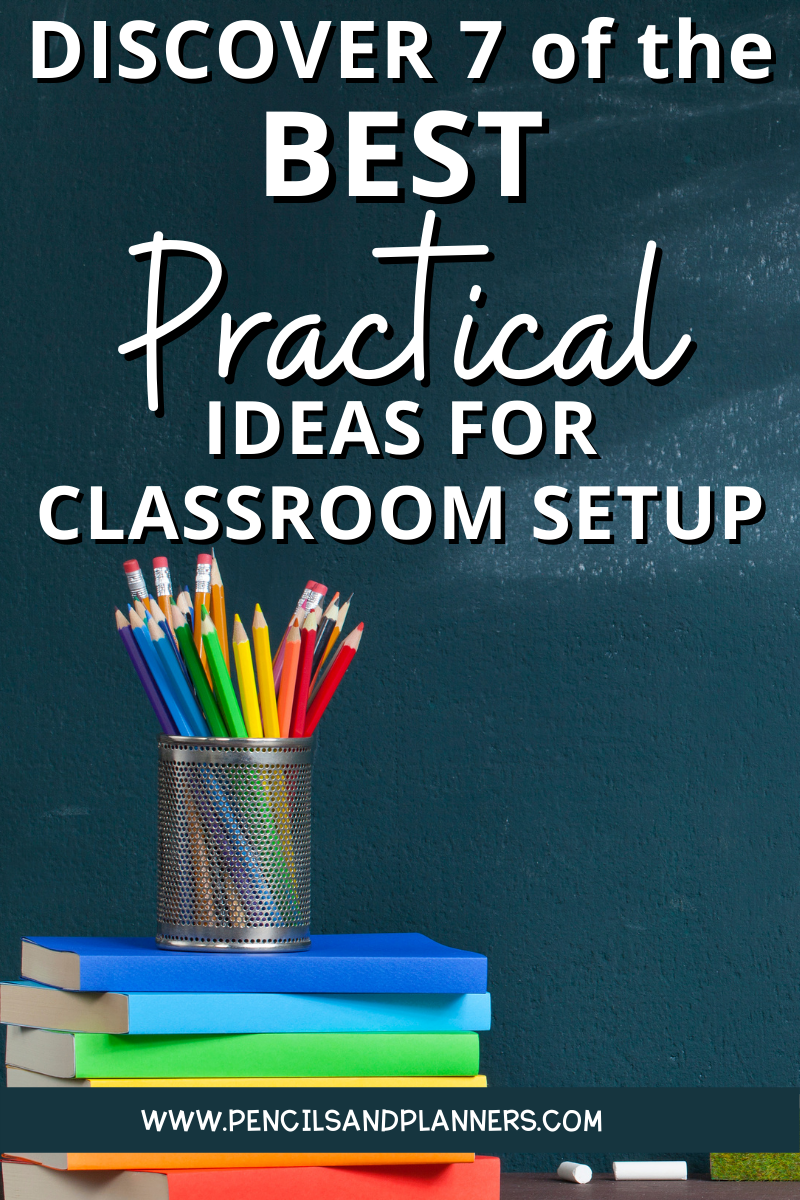
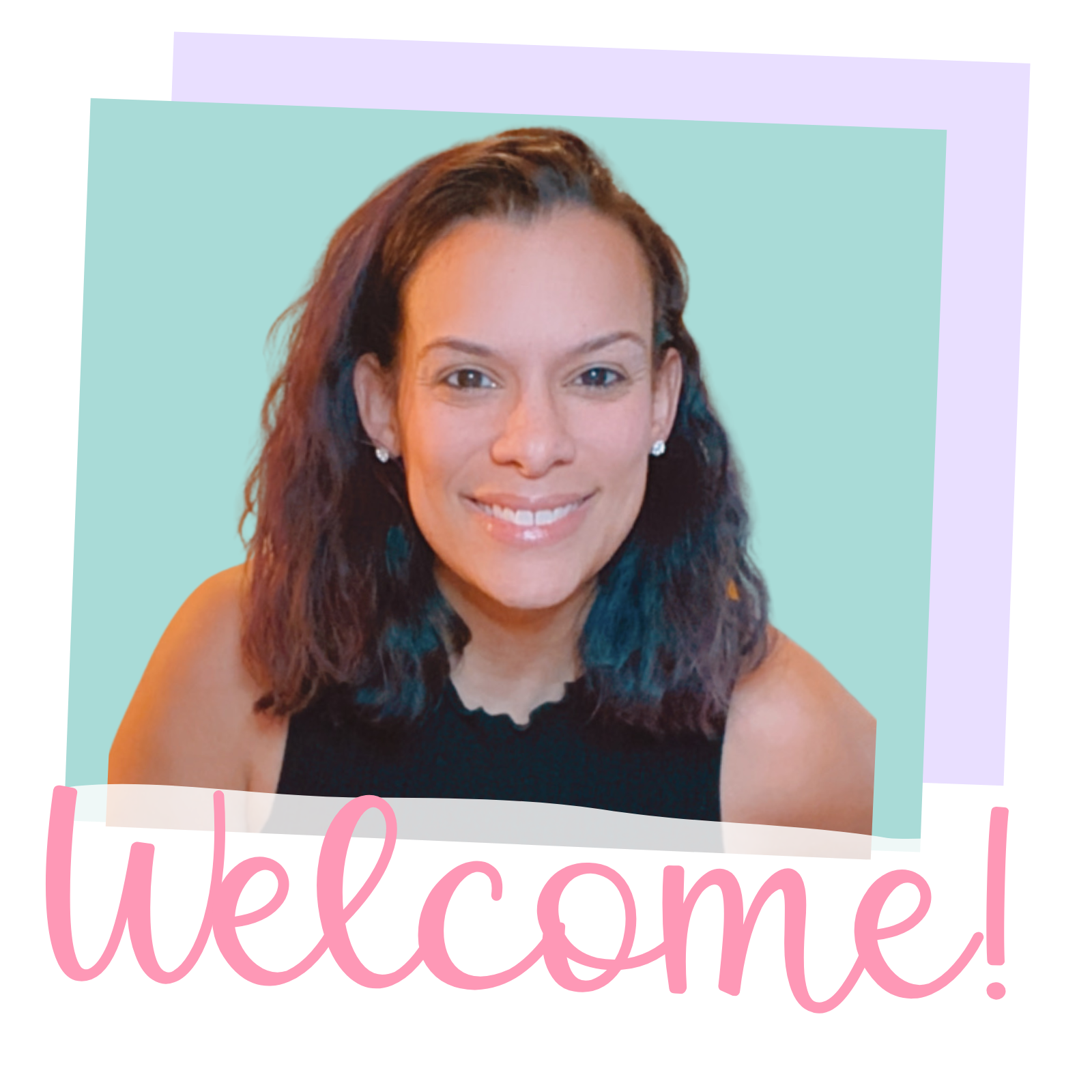
5 Responses
Thank you so much for sharing this! I love the idea of having specific meeting areas in the classroom. This also helps in time management to know what to do next.